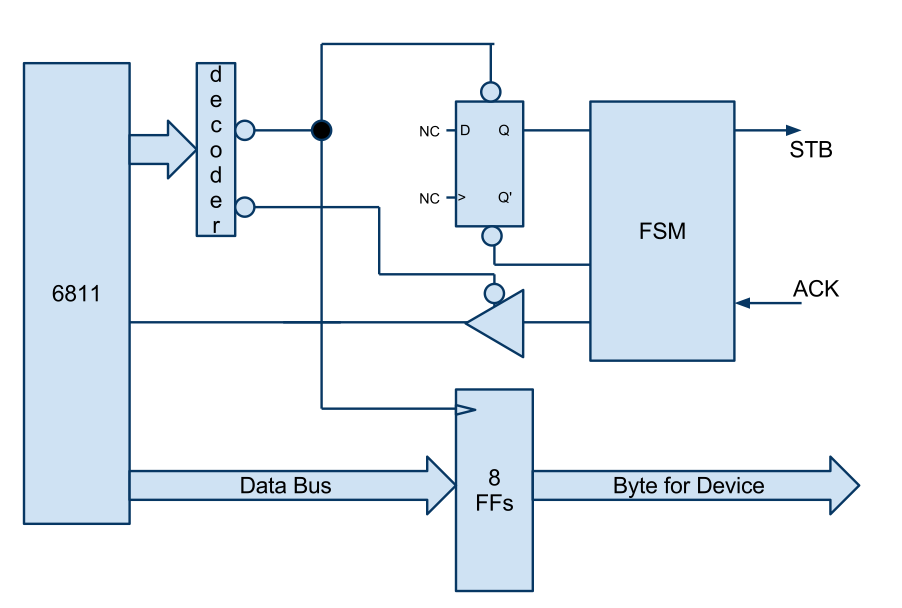Difference between revisions of "CSC270 Homework 8 2011"
(Created page with "--~~~~ ---- <center> <font size="+2">Page under construction!</font> <br \>300px </center> =Problem #1= We covered the ''Handshake Protocole'' i...") |
(→Problem #1) |
||
| Line 17: | Line 17: | ||
| − | + | One way to go faster would be to have a sequencer, a finite-state machine, generate the Stobe signal and interact with the peripheral through the ACK signal. | |
| − | |||
<center> | <center> | ||
[[Image:CSC270_6811_ParallelPort_With_FSM.png|500px]] | [[Image:CSC270_6811_ParallelPort_With_FSM.png|500px]] | ||
</center> | </center> | ||
| + | |||
| + | ;Question 2 | ||
| + | :Design the FSM | ||
| + | |||
| + | ;Question 3 | ||
| + | :How much faster can the 6811 send bytes to the device using this new design? | ||
<br /> | <br /> | ||
Revision as of 15:00, 13 April 2011
--D. Thiebaut 15:59, 13 April 2011 (EDT)
Problem #1
We covered the Handshake Protocole in class, where the computer activates a signal called strobe (STB) and the peripheral responds with a signal called acknowledge (ACK).
We wrote a simple program corresponding to the 6811 sending the character 'A' to the peripheral (the printer).
- Question 1
- Looking at code we wrote, and assuming a very fast printer that absorbs the data bytes as fast as the computer can generate them, what is the maximum speed at which the computer can output bytes to the peripheral?
One way to go faster would be to have a sequencer, a finite-state machine, generate the Stobe signal and interact with the peripheral through the ACK signal.
- Question 2
- Design the FSM
- Question 3
- How much faster can the 6811 send bytes to the device using this new design?

